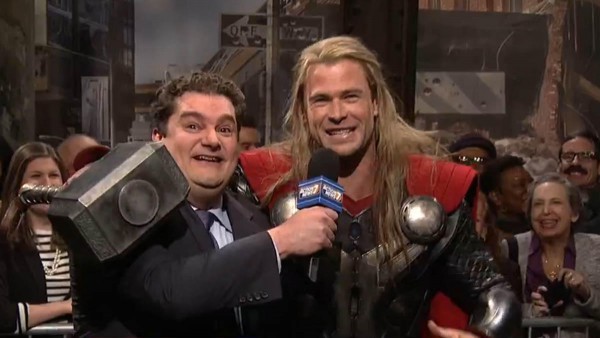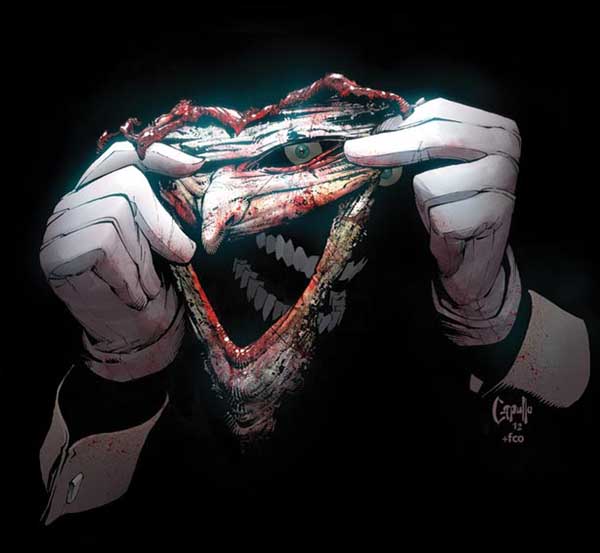 Niagara
Niagara
Written by Charles Brackett, Richard L. Breen and Walter Reisch
Directed by Henry Hathaway
USA, 1953
Marilyn Monroe’s legacy in popular culture and film varies greatly depending on whom one asks. For some, her photo shoots and the unforgettably attractive looks advertised through them meant she was, and for some, still is, the epitome of sex appeal. For others, her roles in films like Some Like It Hot or The Seven Year Itch painted her image as a great leading lady in romantic comedies and, in the case of the former, somewhat of a ditsy dame. Digging a little bit deeper will reveal another version of Monroe standing in stark contrast to these two. One of her earliest films was John Huston’s The Asphalt Jungle from 1950, a riveting heist thriller, in which she played a wealthy middle-aged man’s plaything. Three years later, she was one of the leads in Henry Hathaway’s bleak and at times shocking melodramatic thriller, Niagara.
Niagara’s story transpires on the Canadian side of the famous tourist region where a young newlywed couple from Ohio, Polly and Ray Cutler (Jean Peters and Max Showalter) arrive at their reserved resort cabin with a view to a kill of the falls themselves, only to discover that the couple who had previously rented out the place, Rose and George Loomis (Marilyn Monroe and Joseph Cotton), are still using the facility. Rose pleads to the honeymooners that they allow her and George to stay a short while longer so her husband, somewhat under the weather, may rest a while before they return home. Polly and Ray acquiesce, although the former begins to suspect something is amiss when she discovers shortly thereafter that Rose is getting fresh with another man (Richard Allan), and that George is less ill than he is distraught at how stressful Rose’s behavior has taken its toil on him along the years. Then an ugly accident happens…
Henry Hathaway’s film is brought up with great infrequency when perusing web sites or articles, scholarly or otherwise, discussing the great thrillers of the noir era. In more than a few respects, it fits the bill like a glove, although two factors help it stand out from the fray. Each is painfully obvious and helps give the movie a different feel than most other thrillers of the period. The first is the presence of Monroe as the co-lead, playing a scheming, duplicitous, unfaithful wretch of a person. This being one of her earlier roles, it is safe to claim that her image would change significantly throughout the years to the extent that few people recall her vividly as a great villainess. Her role and performance in Niagara is very much an oddity in that respect, a unique depiction of her range as a performer and a splendid example demonstrating that she was more than a pretty face, but could act as well. This idea of Monroe as a talented actress is often lost in the shuffle of notions people have of the beautiful starlet, founded or not. Niagara is a statement that she could carry not just her own weight but carry the better portion of an entire film for that matter. Hathaway, not blind to the fact that Monroe was gifted with particular physical attributes, utilizes her sex appeal as part of her character’s arsenal to distract, win people over, and eventually betray them. Many of Monroe’s famous charms are on full display, only each is given a dark twist, therefore leaving viewers with a character they may not like so much.
The second element to Niagara makes it an outlier noir is that it looks almost nothing like a noir. Instead of being shot in black in white, Hathaway and his cinematographer Joseph MacDonald presented the film in sumptuous Technicolor. With Monroe’s star power as well as the beauty and grandeur of the Falls, one can assume any number of reasons why it was decided to make Niagara with colours that brilliantly pop. But few would argue that the effort does not pay off. The play of light against shadow is understandably different here than would have been the case had the filmmakers adopted the more traditional route. Niagara is a beauty that practically has to be seen to be believed. More interesting still is that the presence of lively colours nevertheless conveys the sordid, gritty, morally ambiguous tones of the great thrillers that helped make the genre what it is. The filmmakers showcase the world in living colour while staying true to the cinematographic flourishes noir popularized, the standout example being when George finally confronts Rose once and for all in the top floor of a administrative building. Bravura cinematography, editing, acting and pacing all converge to produce the movie’s most gripping and violent scene.
Beyond the cinematography and Monroe’s stellar work is the story, which, on two separate fronts, explores how destructive Rose is to others. On one hand, the result of how she acts toward George is painful enough to see; on the other is the slight rift created between Polly and Roy once the former gets too involved in the drama involving Rose and George. Hathaway does a fine job balancing the two threads, although more emphasis is put on Rose and George’s story. Once it’s made clear to George that his untrustworthy wife indeed had a nefarious plan up her sleeve to cut the bonds of marriage, George, already emotionally volatile, is pushed to the edge of bitterness and desperation. Her plan having failed, Rose creates a new foe in George, one she has great difficulty keeping under control. If Niagara’s first half is more of a drama with ominous undertones, its second half is the violent aftermath of a marital union gone to hell at the behest of one especially devious personality.
It is a shame that Niagara never earned the respect or notoriety it deserves. Hopefully the film’s recent release on Blu-Ray, courtesy of 20th Century Fox, will help alleviate that unfortunate lack of support. The unorthodox usage of Marilyn Monroe and the fact that visually, Niagara looks nothing like other films of the same ilk may have very well worked against it, even though both factors make it a far better film than one might expect. With its availability on home video now fairly wide, fans would do well to seek this film out.
Edgar Chaput







